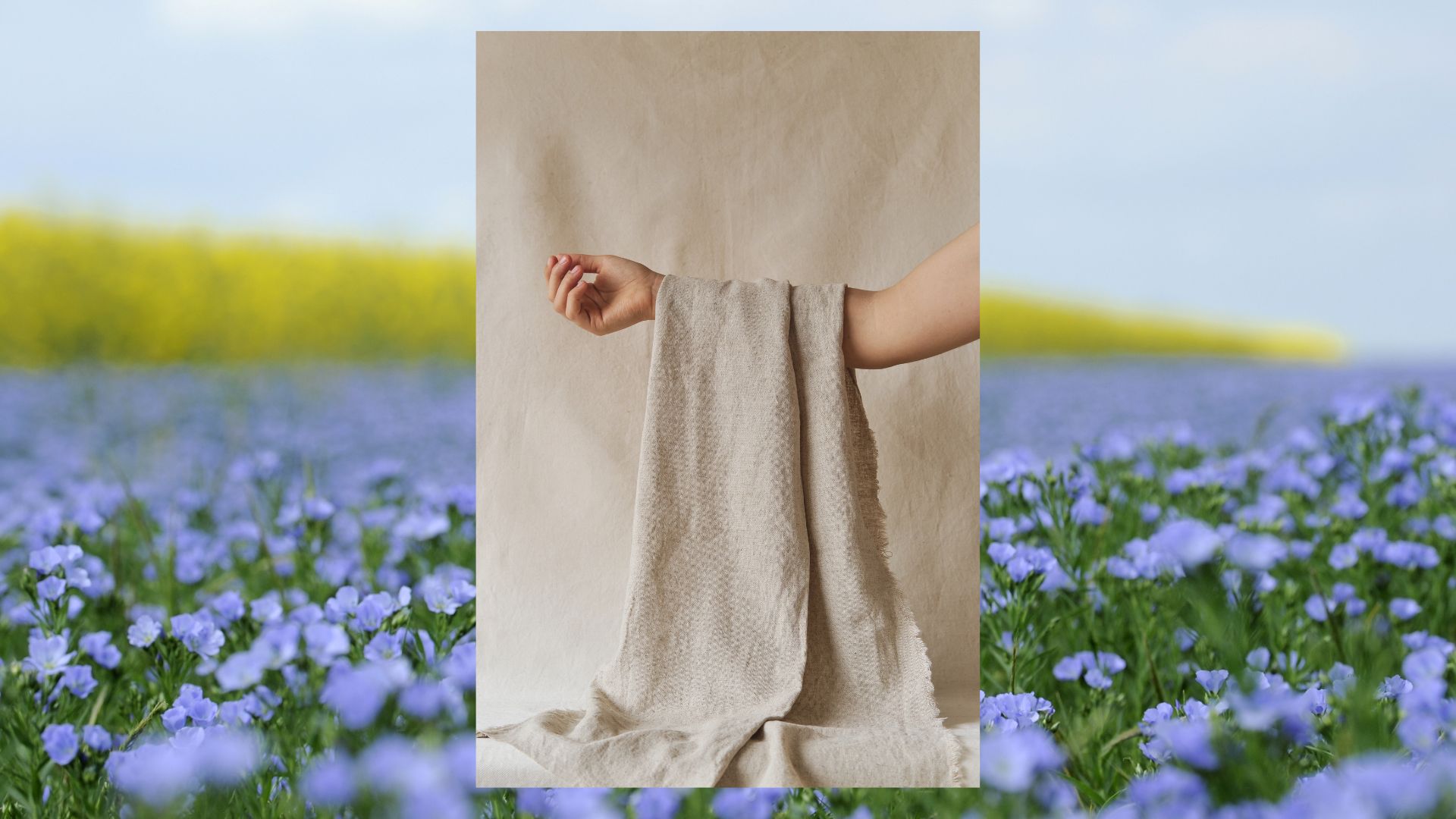Who says January, also says white month! If you want to find yourself in beautiful linens, maybe you want to learn more about linen? Did you know that almost 80% of the world’s exploitation of this fiber comes from Europe, and above all from France? It almost makes you want to shout” Coock Doo! if it has not been processed abroad before being used to make clothing or linen. To understand why, we must first ask ourselves what flax really is.
Linen: a resistant vegetable fiber
Linen is first and foremost a plant. This measures from 80 to 120 cm. The stems are extracted to extract the fibers using a millenary technique called maceration: this textile plant is macerated (in water or on the ground) to more easily separate the filamentous bark from the stem. This is followed by the scutching phase, which consists in separating the textile fibers from the wood and bark by means of a mechanical action of grinding and beating. We then comb all this before spinning it, then weaving it, and we get a beautiful linen! AND this vegetable fiber is naturally resistant and rot-proof. This is what makes it a material of choice for quality clothing that lasts a long time.
Linen clothing care
What are the advantages of linen for our clothes?
- Linen is naturally refreshing as it absorbs up to 30% of its mass in moisturewhich makes it a particularly interesting material for summer when you want breathable, airy and light clothing.
- Resistance also characterizes linen garments, which therefore remain very solid over time, in the face of wear. This robustness is explained by the length of the fibers which are several tens of centimeters (while those of cotton are a few tens of millimetres).
- Linen garments also have the advantage of benefiting from a slight material effect, which comes from the fact that the threads of this vegetable fiber are naturally irregular. Gives relief to a look.
- Another advantage of clothing linen is its eco-responsibility. The cultivation of flax, in fact, is satisfied with rainwater, does not require pesticides and very little electricity for its transformation. Massively grown in Europe, especially in France, it is even the local material par excellence, unlike cotton that arrives from the other side of the world, where it will have required a lot of water and pesticides.
What are the disadvantages of linen for our clothes?
- Linen creases easily. That’s part of the appeal of the material, but it may bother some people. It’s to blame for having such an airy and lightly textured material.
- This material is relatively expensivemore than cotton, in particular because it is grown in Europe and requires several stages of processing.
How to wash a linen garment?
Household linen and linen clothes are not afraid to go through the washing machine, rather. Just choose an average temperature (50°C maximum for sheets, but 30°C is sufficient for clothes) and a minimum rotation (600 rounds). Avoiding chlorine-based detergents will prevent yellowing and damage to the fibre. And as always, the Drying in the open air on a drying rack or tancarville it is preferable to an electric dryer.
Against A stain of red wine, some sparkling water or white wine should suffice. Against a grease stain, rub in some dish soap before letting it sit overnight, and a machine wash will get it out. And against a grass stain, rubbing the fabric with lemon juice before splicing it into the washing machine drum will do the trick.
For ironingthis material easily resists 200°C, but it is better to iron it when it is still damp.
The flax and textile industry
How is flax grown?
This plant needs a temperate and humid climate. This is why it is easily grown all year round in Europe, especially in Belgium, Holland and France (we are even the first world producers!). Rainwater is sufficient (it requires about 700 mm of water distributed over its entire life cycle) e its bark protects it from most insects, which exempts it from pesticides. It is also for these reasons that it is not very relevant to try to buy clothes or household linen in “organic linen”. The only risks for its cultivation are precisely the excess of water and/or sun.
What is the impact of linen on the environment?
Flax cultivation has quite a positive impact on the environment as it is a vegetable and local fiber which also improves the quality of the soil and subsequent crops.
Processing steps (uprooting, maceration, scutching, combing, spinning) of this plant to make fabrics are mainly mechanical, not chemical. Only most of them don’t take place in Europe, but rather in India and China. As the world’s largest producer, France is in the process of reopening its French flax factories so that it can supply 100% linen. Made in France, from plants to clothes and linens. It is an entire industry that was born in the North, in Béthune, and which must ultimately produce 400 tons of yarn a year by 2024.
What are the alternatives to linen?
In clothing and household linen, linen can be replaced or mixed with cotton, hemp or even ramie (a kind of nettle), as industry expert Nathalie Lebas-Vautier explains in the episode dedicated to cotton and its alternatives, from the “Prime Materials” podcast.
Cover photo: Philipe Montigny of Getty Images via Canva; Eliza Alves from capturenow via Canva
Source: Madmoizelle
Elizabeth Cabrera is an author and journalist who writes for The Fashion Vibes. With a talent for staying up-to-date on the latest news and trends, Elizabeth is dedicated to delivering informative and engaging articles that keep readers informed on the latest developments.





